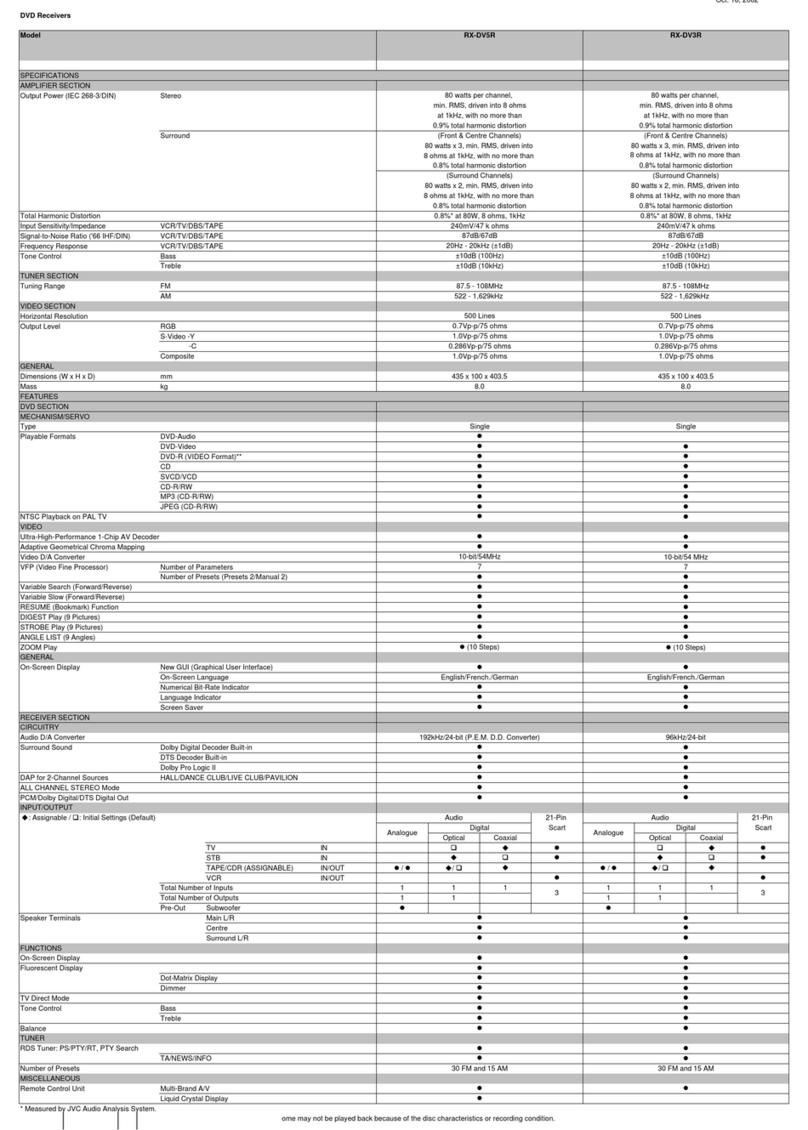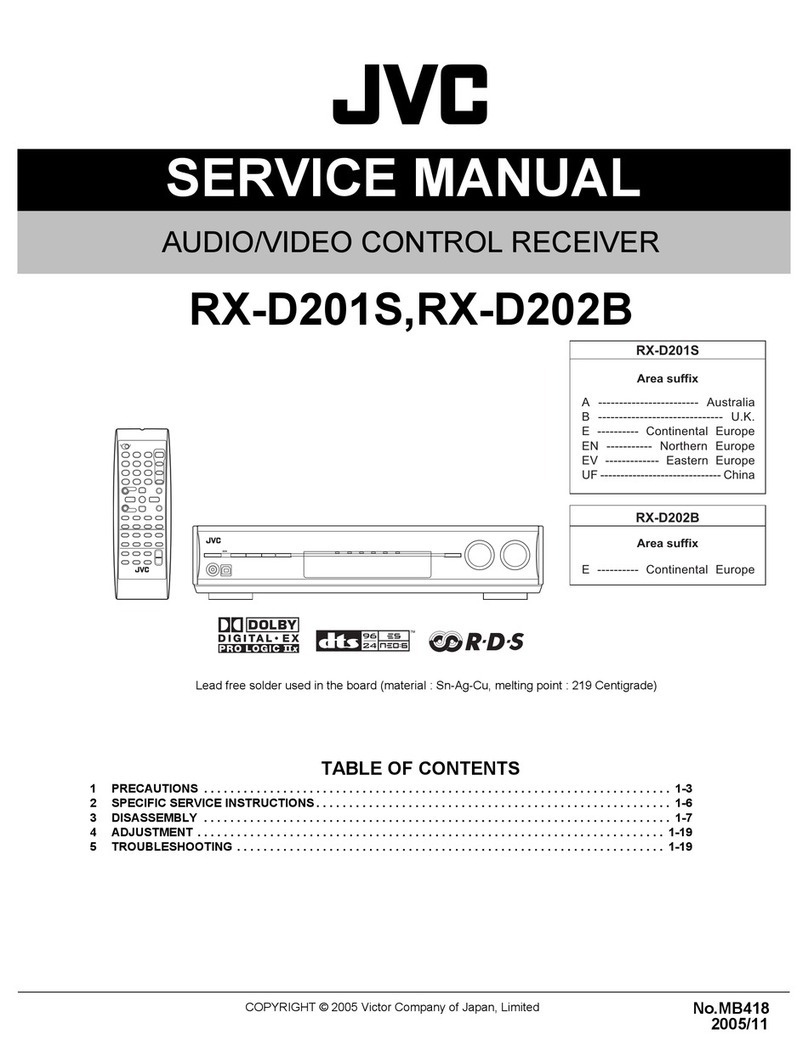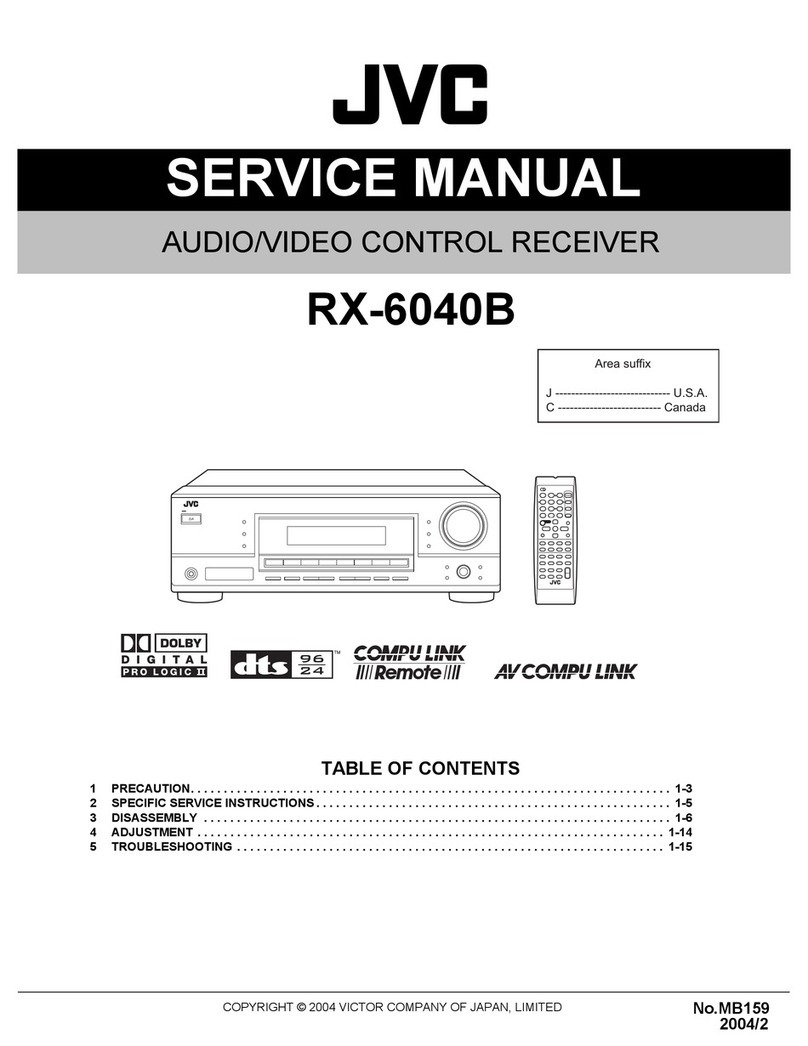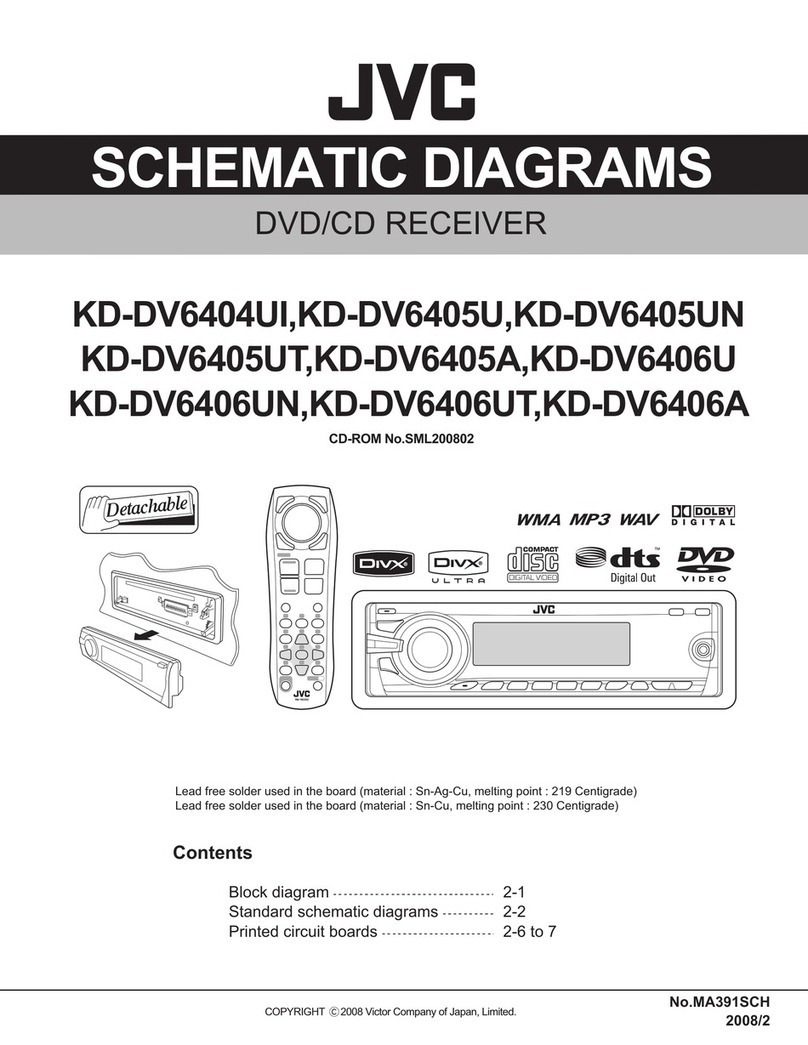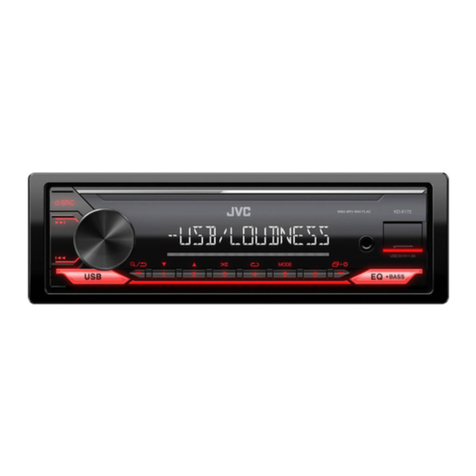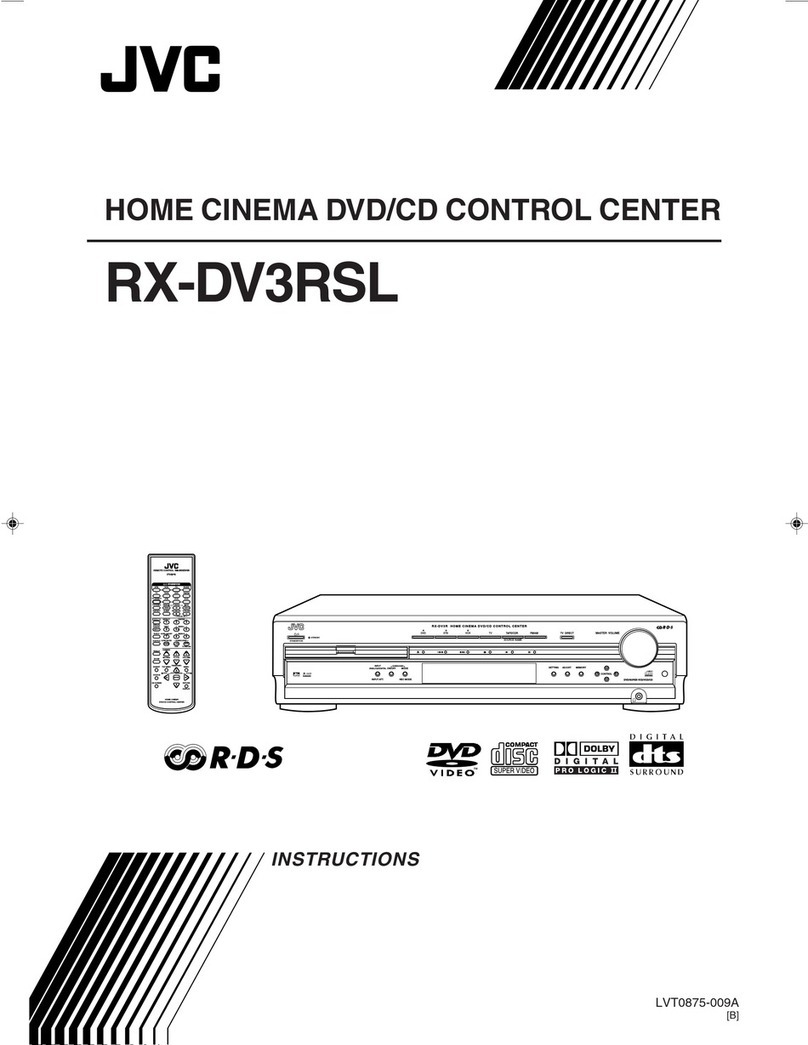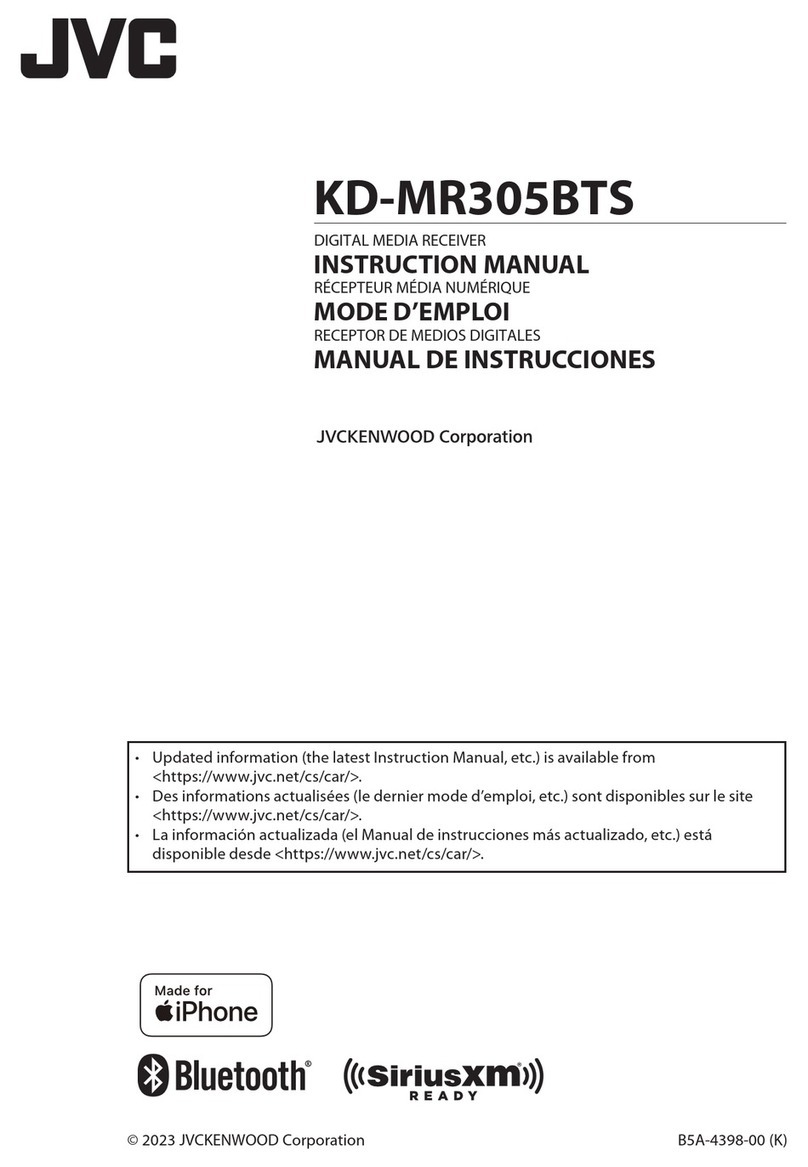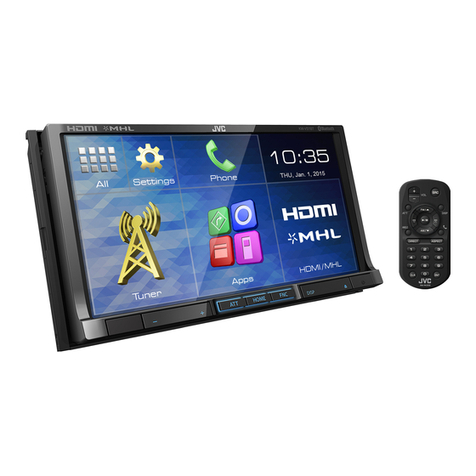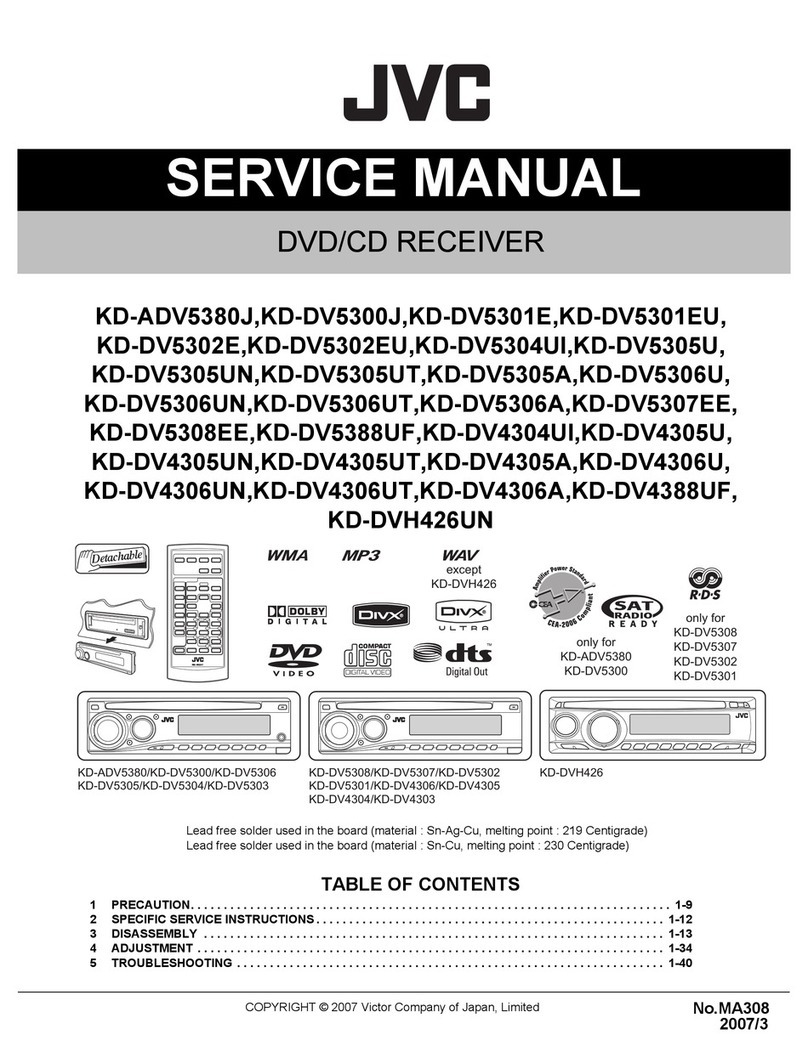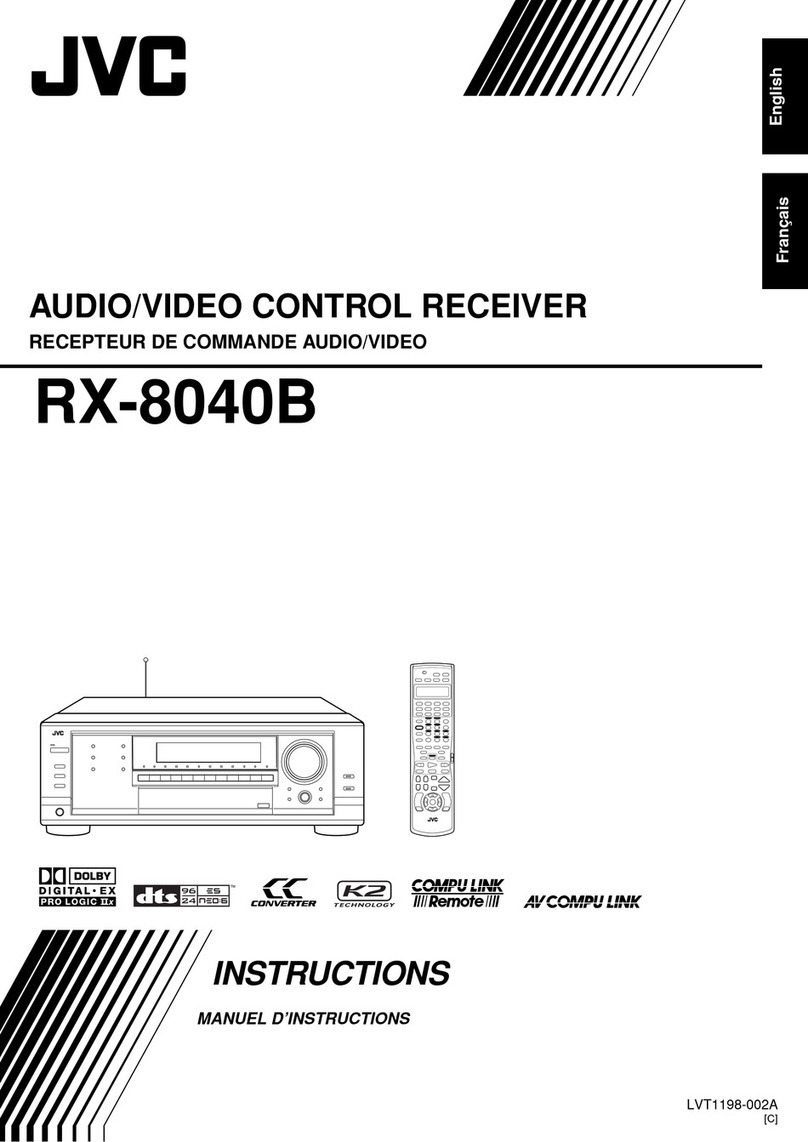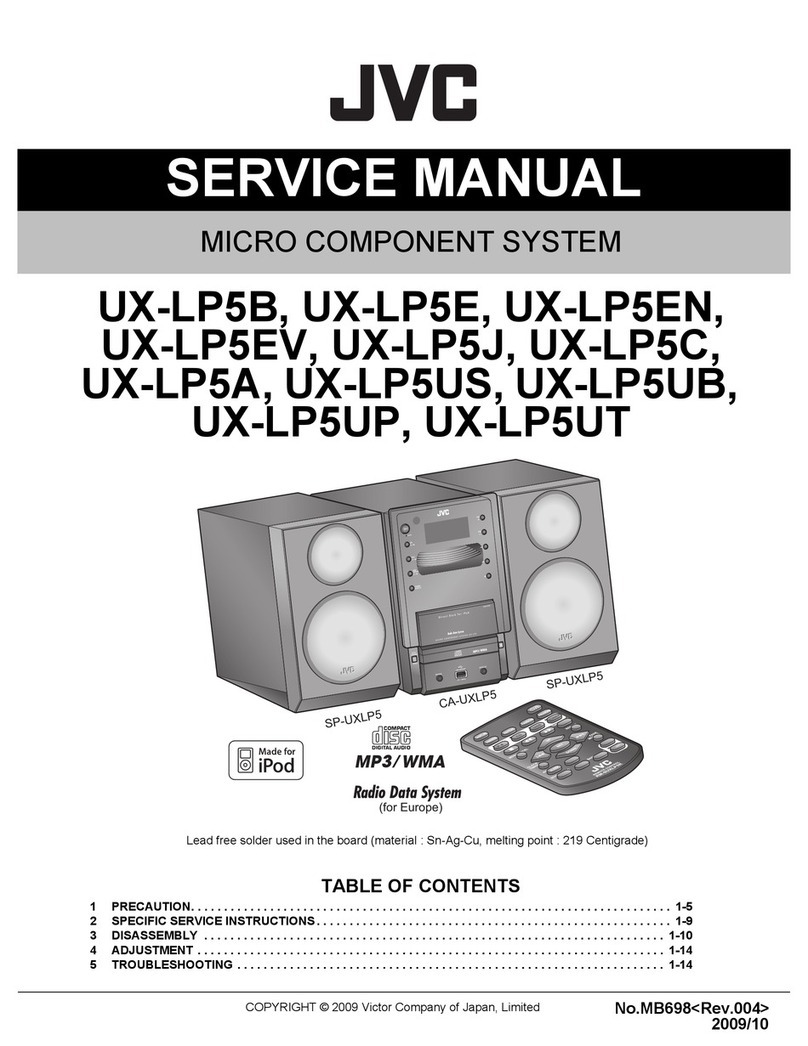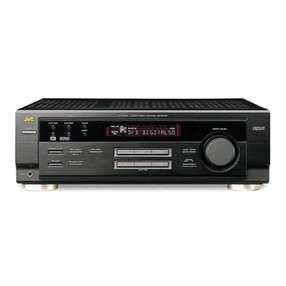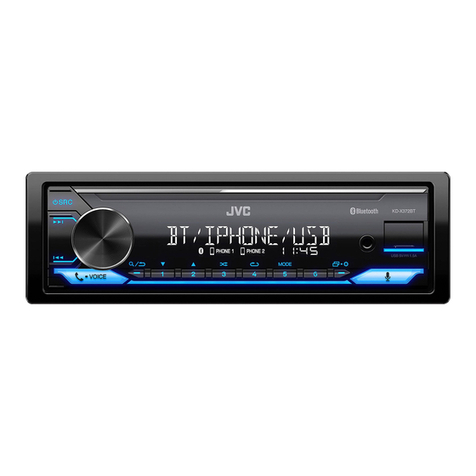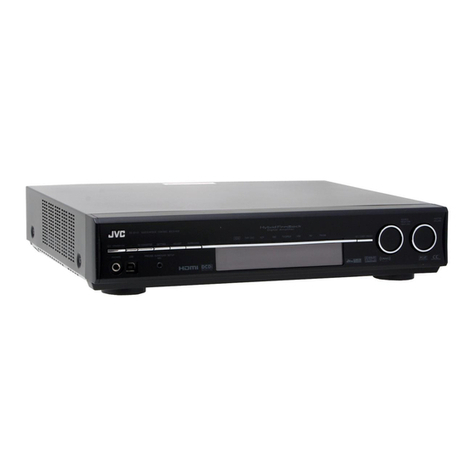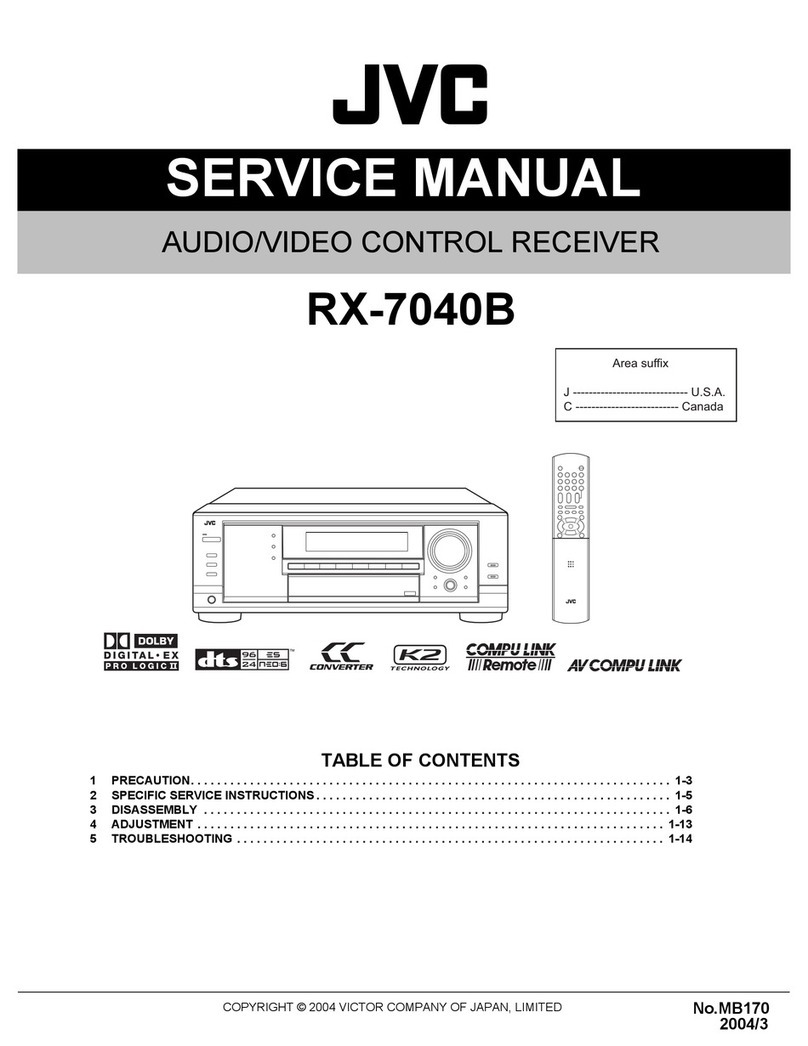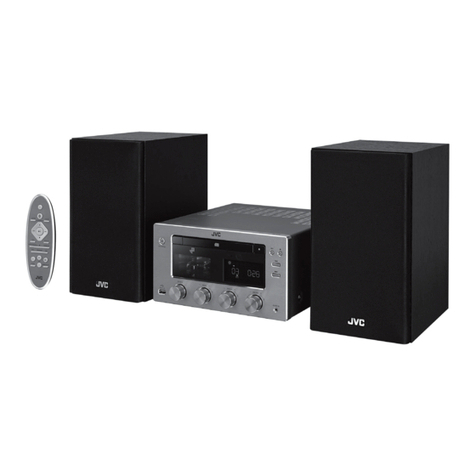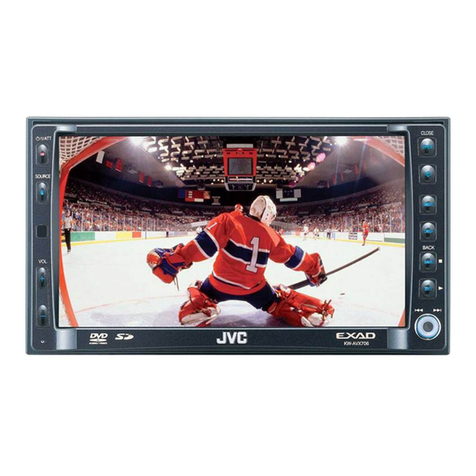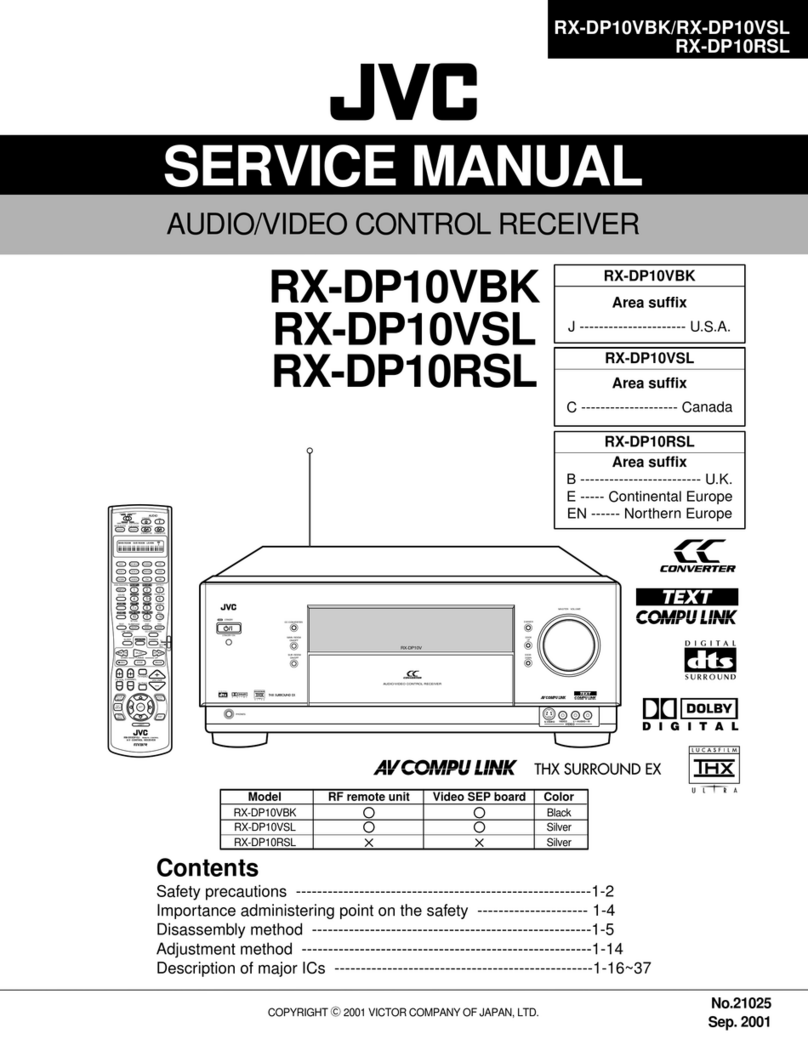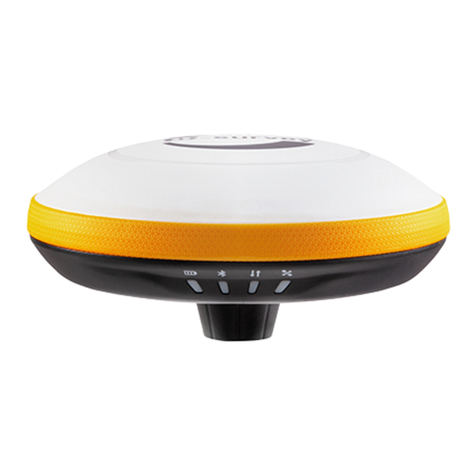
(No.MA446<Rev.001>)1-3
Design and specifications are subject to change without notice.
KD-AVX40/KD-AVX20 for Europe
Compatible Device Mass storage class
Compatible File System FAT 32/16/12
Max. Current DC 5 V 500 mA
BLUETOOTH
Version Bluetooth 1.2 certified
Output Power +4 dBm Max. (Power class 2)
Service Area Within 10 m (10.9 yd)
Profile HFP (Hands-Free Profile) 1.5
OPP (Object Push Profile) 1.1
A2DP (Advanced Audio Distribution Profile) 1.2
AVRCP (Audio/Video Remote Control Profile) 1.3
GENERAL
Power Requirements Operating Voltage DC 14.4 V (11 V to 16 V allowance)
Grounding System Negative ground
Allowable Operating Temperature 0°C to +40°C (32°F to 104°F)
Dimensions (W ×H ×D) Installation Size (approx.) 182 mm ×52 mm ×160 mm (7-3/16” ×2-1/16” ×6-5/16”)
Panel Size (approx.) 188 mm ×58 mm ×12 mm (7-7/16” ×2-5/16” ×1/2”)
Mass (approx.) 2.2 kg (4.9 lbs) (excluding accessories)
AMPLIFIER
Maximum Power Output Front/Rear 50 W per channel
Continuous Power Output
(RMS)
Front/Rear 20 W per channel into 4 Ω, 40 Hz to 20 000 Hz at no more
than 0.8% total harmonic distortion
Load Impedance 4 Ω(4 Ωto 8 Ωallowance)
Equalizer Control Range Frequencies
60.0 Hz, 150.0 Hz, 400.0 Hz, 1.0kHz, 2.5kHz, 6.3kHz, 15.0kHz
Level ±10 dB
Signal-to-Noise Ratio 70 dB
Audio Output Level LINE OUT
(REAR)/SUBWOOFER:
Line-Out Level/Impedance 2.5 V/20 kΩload (full scale)
Output Impedance 1 kΩ
Color System PAL
Video Output (composite) 1 Vp-p/75 Ω
Other Terminals Input LINE IN, VIDEO IN, USB input terminal, Aerial input
Output VIDEO OUT, DIGITAL OUT
Others CD changer, OE REMOTE, MIC IN
FM/AM TUNER
Frequency Range FM 87.5 MHz to 108.0 MHz
AM (MW) 522 kHz to 1 620 kHz
(LW) 144 kHz to 279 kHz
FM Tuner Usable Sensitivity 9.3 dBf (0.8 µV/75 Ω)
50 dB Quieting Sensitivity 16.3 dBf (1.8 µV/75 Ω)
Alternate Channel Selectivity (400 kHz) 65 dB
Frequency Response 40 Hz to 15 000 Hz
Stereo Separation 40 dB
MW Tuner Sensitivity/Selectivity 20 µV/40 dB
LW Tuner Sensitivity 50 µV
